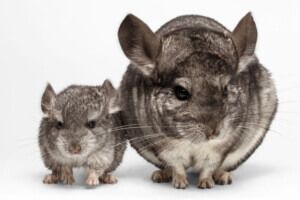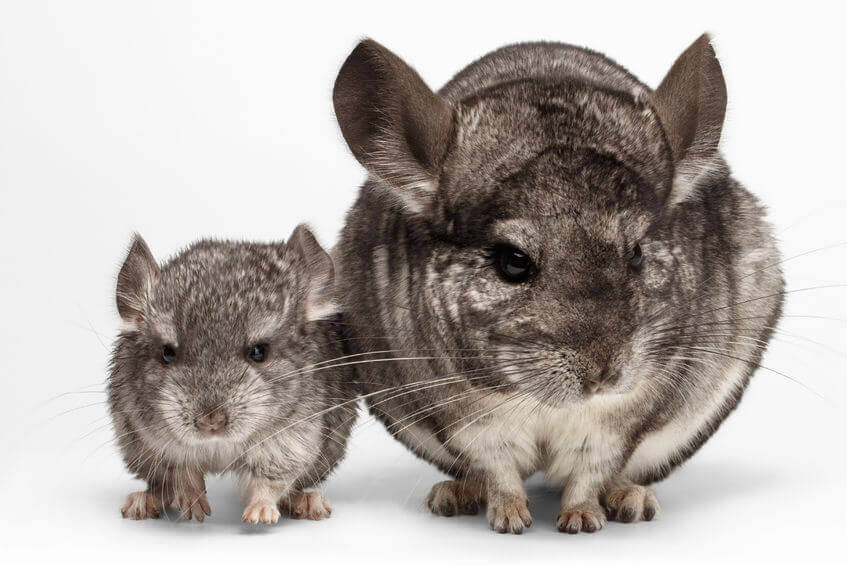Because the love of animals can wear various furs, today I decided to write about the little gray rodents, extremely curious and with a precious fur. Guess who it is? An important indication would be that these animals are increasingly found in people’s homes as adorable pets. Chinchilla, of course!
Generalities.
Chinchilla (chinchilla, chinchilla or chinchilla) is a rodent mammal, belonging to the class Mammalia, ordinal Rodentia, family Chinchillidae. Three species are known: Chinchilla langiera (the most widespread), Chinchilla brevicaudata, Chinchilla regala (completely extinct).
It is native to South America, Peru, Chile, Bolivia, the South American Andes, living in rocky areas with little vegetation, at altitudes above 2500 m.
They are small animals, measuring no more than 25-30 cm. The average weight, at maturity, is between 400-600 g. In appearance, they are located somewhere between rabbit and squirrel. They have black, round and bright eyes, round ears and a long, fluffy tail. The forelimbs are five fingers longer, and the hind limbs are only four fingers shorter. They live in the colonies, and the average life expectancy is between 10-15 years.
The color of the chinchilla’s fur generally varies in shades of gray on the back, and off-white on the belly. The background color is bluish-gray, and the threads have 3 more stripes of color, in the middle, a dark blue, an intermediate, silver-white, 4-6 mm and, at the top, a dark blue, 1- 4 mm. Other color variations are known, dominant black, dominant white or dominant beige; with non-agouti fur, recessive black, albino, sapphire, pastel (or recessive beige) and beige.
Chinchillas are small rodents, herbivores, especially at night. They are very active, agile, curious and full of energy.
They are very clean, sociable, have no external parasites, do not make noise and are extremely funny, essential characteristics for an excellent pet.
In the natural environment they feed on various vegetables, roots and herbs. Teeth are specially adapted to a vegetarian diet and have a continuous growth throughout their life.
Chinchilla fur is one of the furs with the highest density of hair, with over 20,000 strands / cm2 and one of the softest, 30 times softer than human hair. Up to 120 strands of hair come out of a single hair root. Due to this characteristic, the fur does not allow the penetration of external parasites, fleas, lice, etc.
C
General information on their growth in captivity.
Living space / Cage. Given that they are small animals, full of energy, very curious and, by their nature, bear fruit almost everything that comes their way, chinchillas must be kept in a specially arranged space. The cage must give the chinchilla enough security and space, both horizontally (80 cm) and vertically (50 cm). It must be made of galvanized or chromed wire, unpainted. The cage should be placed in an area with as little noise as possible. The ambient temperature should be around 20 degrees C. Inside the cage, in addition to the containers for food and water, litter and “toys”, there should also be a space for the chinchilla bath. Bathing in the sand is essential for the fur’s health, it helps to remove excess sebum, leaving the fur clean and silky. The sand is a special one, very fine and must be made available to the animals daily, or at least 2-3 times a week. It is recommended to brush the fur with a special brush, but watering it should be avoided.
Because they are very sociable animals, females may be kept in several cages, but cohabitation of two or more males in the same cage should be avoided.
Chinchillas, after adapting to the new home and with the owner, can be taken out of the cage and released, but only under the close supervision of the owner and after all measures have been taken to prevent various accidents (removal of electrical cables, toxic substances, etc.).
Food. Chinchillas must be fed with great care and attention. The digestive system of chinchillas is very sensitive and the balance of the intestinal flora is very fragile. The diet is based primarily on dry, fresh, mold-free hay. It should be taken daily at your discretion. Hay provides the necessary fiber for the proper functioning of the digestive system, preventing intestinal obstruction and helping to whiten teeth. In addition to hay, concentrated fodder pellets can also be used, especially alfalfa. The diet should be supplemented with fresh vegetables: carrots, celery, endives, salad. All this at room temperature and wiped if washed. Vegetables and greens with a high water content are not recommended in chinchilla feed. Vitamin-mineral supplements can be given to supplement the diet of rodents.
In conclusion, with minimal effort and a not very large investment, the chinchilla is a real adorable pet. All they need is responsibility, care and a lot of love.
Advice! If you have decided to expand your family with a chinchilla and you want it to get used to the new home quickly and it is good for you that its age is between 2-4 months.
Curiosities. The first records of chinchilla date back to 1500.
The royal chinchilla is the largest species, it has a body length of 36-38 cm and a weight of 700-800 g.

